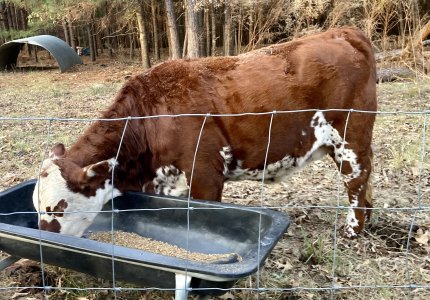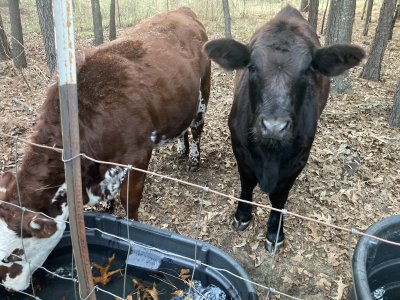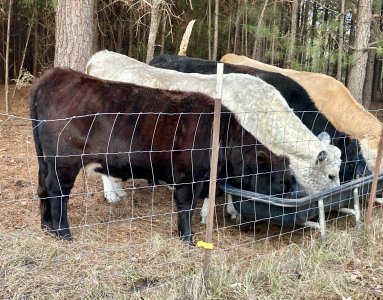georgiabob
Well-known member
- Joined
- May 31, 2021
- Messages
- 224
- Reaction score
- 169
These heifers were born last November. Would you breed them
In January based on these pictures? The yellow cow is the mother of the paint and the black cow is the mother of the dark brindle.
In January based on these pictures? The yellow cow is the mother of the paint and the black cow is the mother of the dark brindle.
Attachments
-
 308B739D-CB4C-49C0-9BF2-2631DD311A60.jpeg2.2 MB · Views: 23
308B739D-CB4C-49C0-9BF2-2631DD311A60.jpeg2.2 MB · Views: 23 -
 CA76BD3E-83C2-437E-8FF6-45D7E148EF46.jpeg4.3 MB · Views: 26
CA76BD3E-83C2-437E-8FF6-45D7E148EF46.jpeg4.3 MB · Views: 26 -
 1FB8BAE0-3553-44FF-A453-2918794599F4.jpeg5.2 MB · Views: 24
1FB8BAE0-3553-44FF-A453-2918794599F4.jpeg5.2 MB · Views: 24 -
 2F5C2816-4FCC-4EC0-A265-C6E03AAEA541.jpeg4.6 MB · Views: 24
2F5C2816-4FCC-4EC0-A265-C6E03AAEA541.jpeg4.6 MB · Views: 24 -
 C61A6E40-A63B-43E2-BECB-88E6B7266233.jpeg5.7 MB · Views: 25
C61A6E40-A63B-43E2-BECB-88E6B7266233.jpeg5.7 MB · Views: 25 -
 97C58FF5-D7E4-454F-A9EC-F2166082BE50.jpeg2.9 MB · Views: 25
97C58FF5-D7E4-454F-A9EC-F2166082BE50.jpeg2.9 MB · Views: 25
